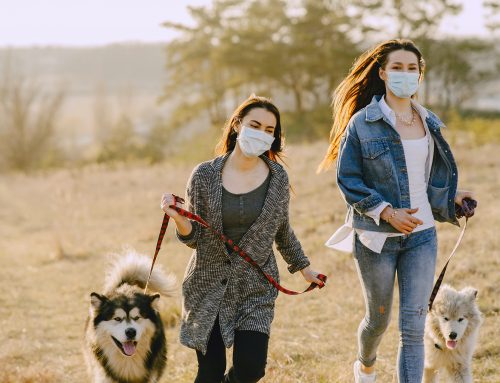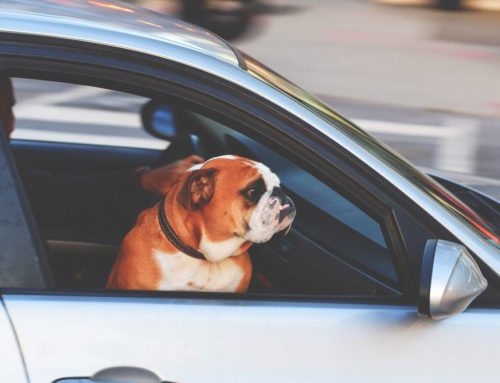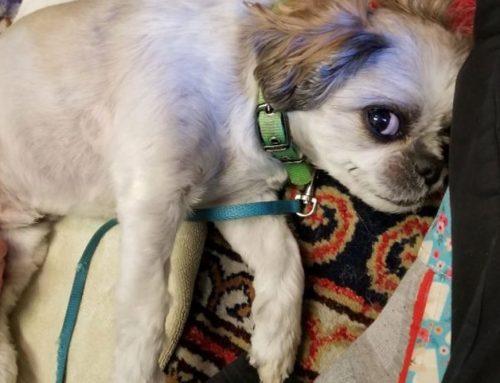
Recently, my son came down with appendicitis. In the middle of the night we were admitted to the pre-op waiting room as our little baby was wheeled away and we had no idea what the next few hours would bring. Thankfully the surgery was successful and he was home in less than 24 hours talking about how much TV he watched and how many popsicles he had eaten. Clearly all was forgotten. But this experience made me think more about the experience you as pet owners have of bringing your own fur babies to our hospital for procedures. How much anxiety there is about leaving animals in our care and the unknown of what happens when pets leave the exam room destined for surgery.
Here is a guide to your pet’s visit to Caledon Mountain Veterinary Hospital:
The journey to the operating room probably starts weeks in advance of the selected surgery date. For every procedure, a thorough pre-op exam is performed in advance to ensure that no other medical problems exist that might complicate an anesthesia. Blood is often taken if it hasn’t recently been done at a wellness appointment. Also, this is our opportunity to prescribe any medications that might help with anxiety (for your pet, not for you) on the day of the surgery. As a team, we are committed to Fear Free visits and this means doing anything that we can to make a visit to the hospital a happy experience for your pet. For most patients this now means pre-visit sedatives or anti-anxiety medications.
A few days before the surgery date you should receive a call to remind you of your appointment and a reminder not to give any food on the morning of the procedure. Although missing breakfast upsets anybody’s morning routine, this is important as it makes anesthesia safer by reducing the risk of regurgitating food while asleep.
On the day of the surgery, you will meet with a veterinary technician to discuss any concerns and go over the procedure and the estimate. This is your opportunity to ask any questions and let us know if anything has changed for your pet since we last saw them. A physical exam will be performed at this time to ensure that there are no unknown concerns including changes in heart rate, rhythm, or sounds, and that your pet does not have a fever. At this point it is time to give your furry friend a big snuggle and say “see you later” since we next have to escort them to the treatment room.
Each animal is kept in their own kennel with a big fluffy blanket to keep them safe and secure and away from other animals. The veterinarian responsible for your pet will review your file, any x-rays or other diagnostic tests and will examine your pet. If there are any concerns, a veterinarian may contact you before the surgery to ensure that these have been discussed. Each patient must wait for their allotted time which may be based on age, complexity of the procedure, who booked first or a variety of factors. If this is concerning to you we can go over timing of procedures at your morning pre-surgical appointment.
When it is time for your pet to have their procedure, the physical exam will be repeated by the veterinarian and then a sedative tailored to each animal will be administered by injection. When your pet is sleepy, an intravenous catheter will be placed in one of their legs (this is why there is a shaved area on your pet’s leg when they come home). This allows us to give medications and fluid therapy during the procedure. The anesthetic is administered through this catheter and your pet is placed under general anesthesia. At this time a breathing tube will be put in their mouths to allow us to give them safe anesthetic gas and oxygen combined during the surgery
Once the patient is under anesthesia, monitoring equipment is put in place to monitor oxygen, carbon dioxide, blood pressure, breathing, heart rate and depth of anesthetic. These allow us to make changes to the anesthetic protocol based on the specific needs of each patient and ensure the safest possible experience for animals in our care.
The surgical procedure varies a lot depending on each pet’s needs but sterile surgical procedures and equipment are always used at Caledon Mountain Veterinary Hospital to provide an equivalent level of sterility and infection control to that seen in similar human procedures. This reduces postoperative complications and the need for antibiotic use for our patients.
After the procedure, each pet is moved to a recovery kennel where our veterinary technical team will continue monitoring safety parameters until your pet is completely recovered, and the first face they will see when they wake up will be the same friendly person who helped them get to sleep. Cuddled up in a warm blanket, your pet will sleep safe and cozy until they are recovered and ready to go home. After recovery from anesthesia we will get in touch with you, so if you receive a call from the Hospital, please do not worry. We check in with each of our pet parents to update them on the status of their furry friends.
A few hours of recovery in hospital, and most pets are ready for a walk, a bathroom break and a snack before they head home with recovery instructions and medications. In many situations pets still need to wear the “Cone of shame” after a surgical procedure to stop them from licking at their incision, but there are lots of other options available if this does not sound like the right choice for your pet, please feel free to discuss options with our technical team.
From start to finish, our focus is the safety and comfort of your beloved animal. We know that surgery and anesthesia can be anxiety-inducing for anyone, but from preoperative exams and diagnostics, to individual anesthetic care and monitoring, to comfortable recovery we do everything possible to make sure that your pet has a safe and happy experience while we help them with the surgery they need. I hope that this helps you have fewer worries the next time your furry friend is staying with us for surgery.
-Dr. Rob




